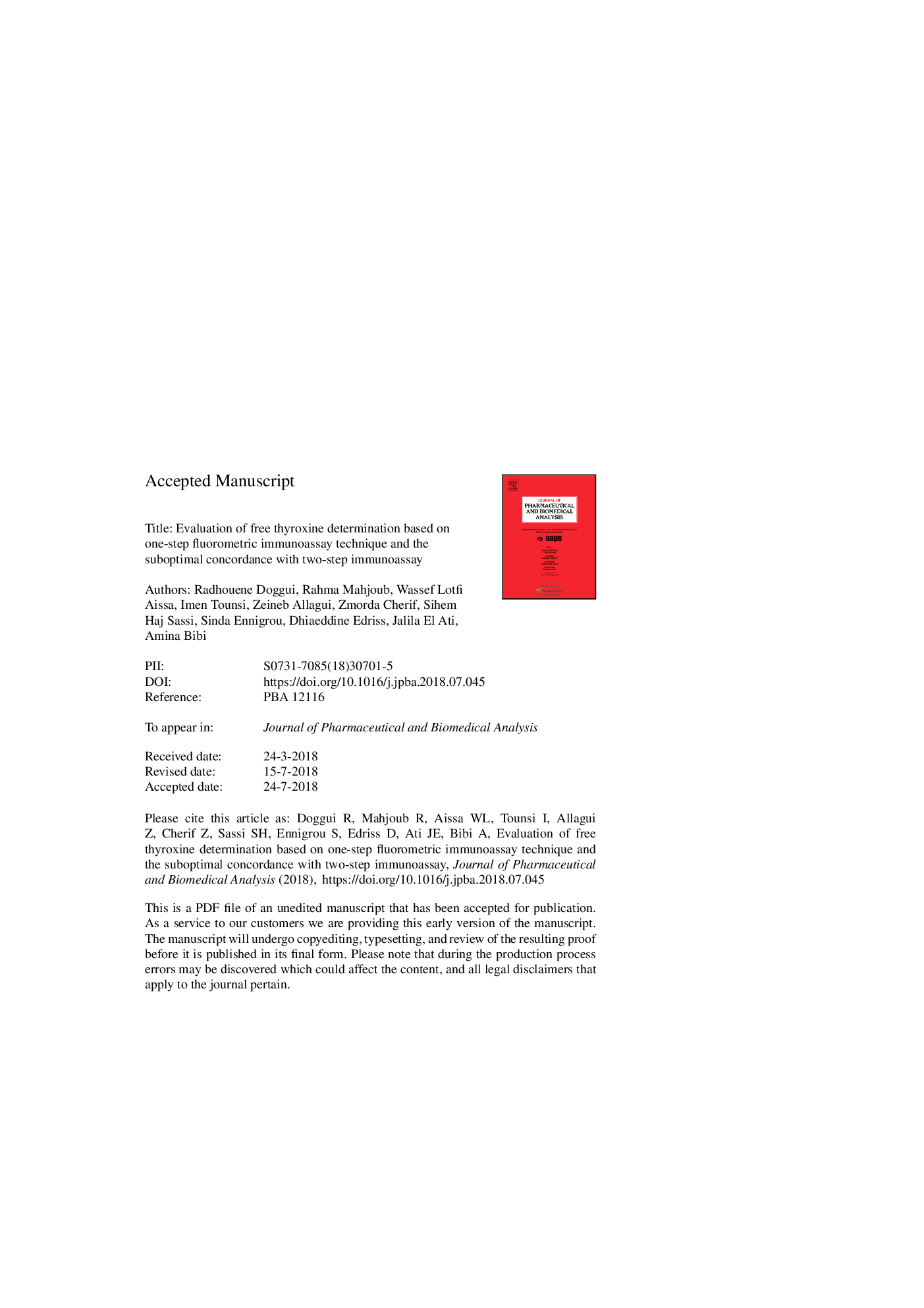| Article ID | Journal | Published Year | Pages | File Type |
|---|---|---|---|---|
| 7625732 | Journal of Pharmaceutical and Biomedical Analysis | 2018 | 27 Pages |
Abstract
Free thyroxine (FT4) quantification is continuing to be a concern. The purpose of the following study was to evaluate the analytical performance of Tosoh AIA900 based on a one-step technique and its comparison to Access 2 (two-step technique) over different clinical contexts (euthyroid, thyroid disorders, uncontrolled diabetes, renal failure and pregnancy). The protocol established by the French society of Clinical Biology was used to evaluate: imprecision, limit of detection, trueness, linearity, interferences and method comparisons. Within-run variation of 3.1%, 5.7% and 4.4% were found for the low, medium and high controls, respectively. Between-run was 5.8% for low control, 5.7% for medium control and 7.1% for high control. Common interferences did not affect one-step immunoassay FT4 results. The linearity was checked up to 86â¯pmol/L. The limit of detection was 5.5â¯pmol/L. The concordance correlation coefficient (CCC) showed a low agreement (0.6) between both methods. Bland-Altman plot revealed that AIA 900 one-step immunoassay technique provides a significant higher values ((+2.8â¯Â±â¯2.7â¯pmol/L;pâ¯<â¯0.0001). The Passing-Bablok regression demonstrated both proportional and systematic differences in comparison to Access 2. The lowest association was noted in subjects with impaired renal function (CCCâ¯=â¯0.27). At the time of the study, the results of on-step immunoassay are not directly comparable with Access 2.
Related Topics
Physical Sciences and Engineering
Chemistry
Analytical Chemistry
Authors
Radhouene Doggui, Rahma Mahjoub, Wassef Lotfi Aissa, Imen Tounsi, Zeineb Allagui, Zmorda Cherif, Sihem Haj Sassi, Sinda Ennigrou, Dhiaeddine Edriss, Jalila El Ati, Amina Bibi,
